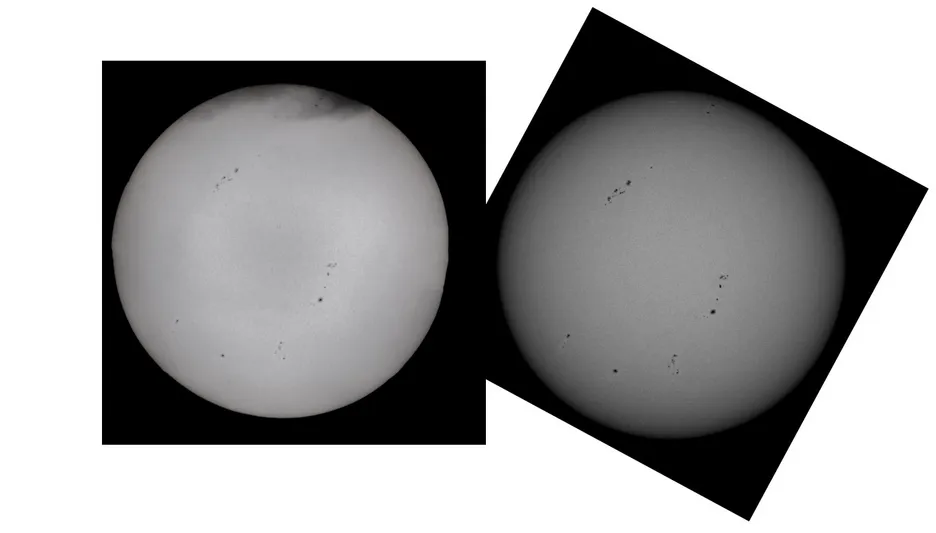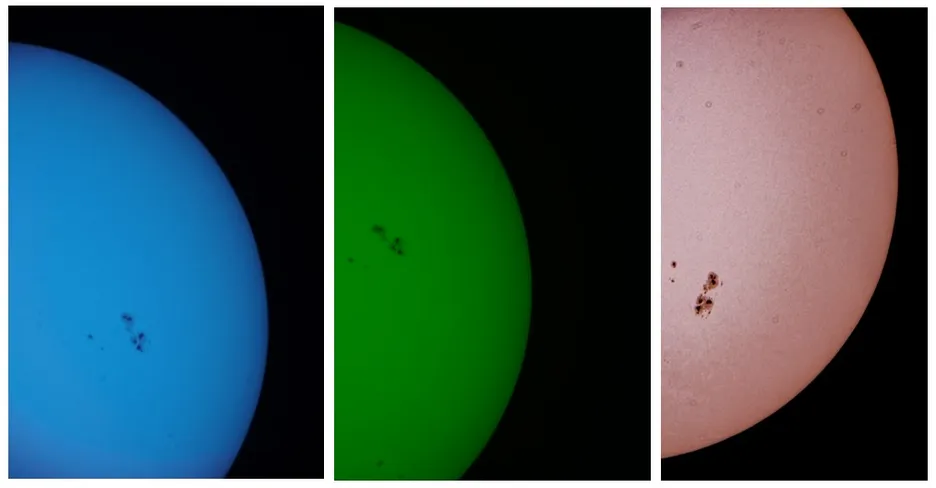Solar Observations
Tehlan, Kartikay
Telescopic observations of the Sun are beneficial for studying the influence of the Sun on the Earth by observing the changes on the solar disk. Periods of increased solar activity – such as increased number of disturbances of solar magnetism (which result in solar flares that could disrupt electrical systems and communications on the Earth) appear as increase in the number of sunspots – dark spots on the solar disk. These are visible even through small sized telescopes on the Earth.
One such observation is presented below in 1a, taken with the telescope of the IAPG Observatory at TUM. [The IAPG Observatory is located at the last floor of the TUM main campus. The Observatory is made by student and ex alumnus of the TUM supported by Prof. Anja Schlicht and Prof. Urs Hungentobler. The main scope is a CelestronEdge HD 11 with which we can observe up to 17 mag with a field of view of 21.9’ x 16.5’, and f-ratio of
f-ratio = Focal Length / Aperture = 2800mm / 280mm = f / 10

Fig 1b (right) Solar observation from SDO – 15 June, 2022, 1829 Hrs [Courtesy of NASA/SDO and the AIA, EVE, and HMI science teams]
In addition to the noises from the readout process, bias, and temperature, the noise due to atmospheric turbulence plays a major part in the resolution that can be achieved from the telescopic observations of the sun. In the above image, the clouds partially block the solar disk, while the sunspots visible could also have blurred edges and neighbouring zones due to the noise from the sky. However stacking, very low exposure and high focal length are suitable to generate an image with acceptable signal to noise ratio. This is compared in 1b with the similar image of the solar disk taken by the Solar Dynamics Observatory [1] that does not suffer noise from sky due to being placed outside the atmosphere.
The relative angle shift between the two images is due to positioning of the camera on the telescope.
Another property of the Sun plays a role in spectrometry: observing the wavelengths emitted by the Sun. One can separated out the various wavelengths through the use of specific filters. A filter blocking the reds and infrareds produces the image in 2a. A Calcium filter shows the solar disk in 540nm wavelength as seen in 2b. IR pass filter produces the image in 2c. This can be used to detect the atmospheric composition of the planets that transit in front of the sun (or conventionally stars with planets in orbit) – as explained in the guest lecture held at European Southern Observatory in Garching.

What is noteworthy here is the amount of light received by the sensor decreases with filters that block the wavelengths received. Since IR pass filter most wavelengths are received, we get an image with low exposure (0.005s) while keeping the gain constant (ISO 100). For the filter blocking the reds, a major portion of incoming light is blocked and requires increased exposure (0.008s) for the same gain (ISO 100). Since the Ca filter blocks all light except the Calcium wavelength, it required even longer exposure of 0.4s for the same ISO. The results are increasingly blurred images with loss of information, if we keep the gain constant. Hence, the ISO needs to be modified accordingly to obtain good pictures.
[1]: SDO: sdo.gsfc.nasa.gov last accessed 15 June, 2022